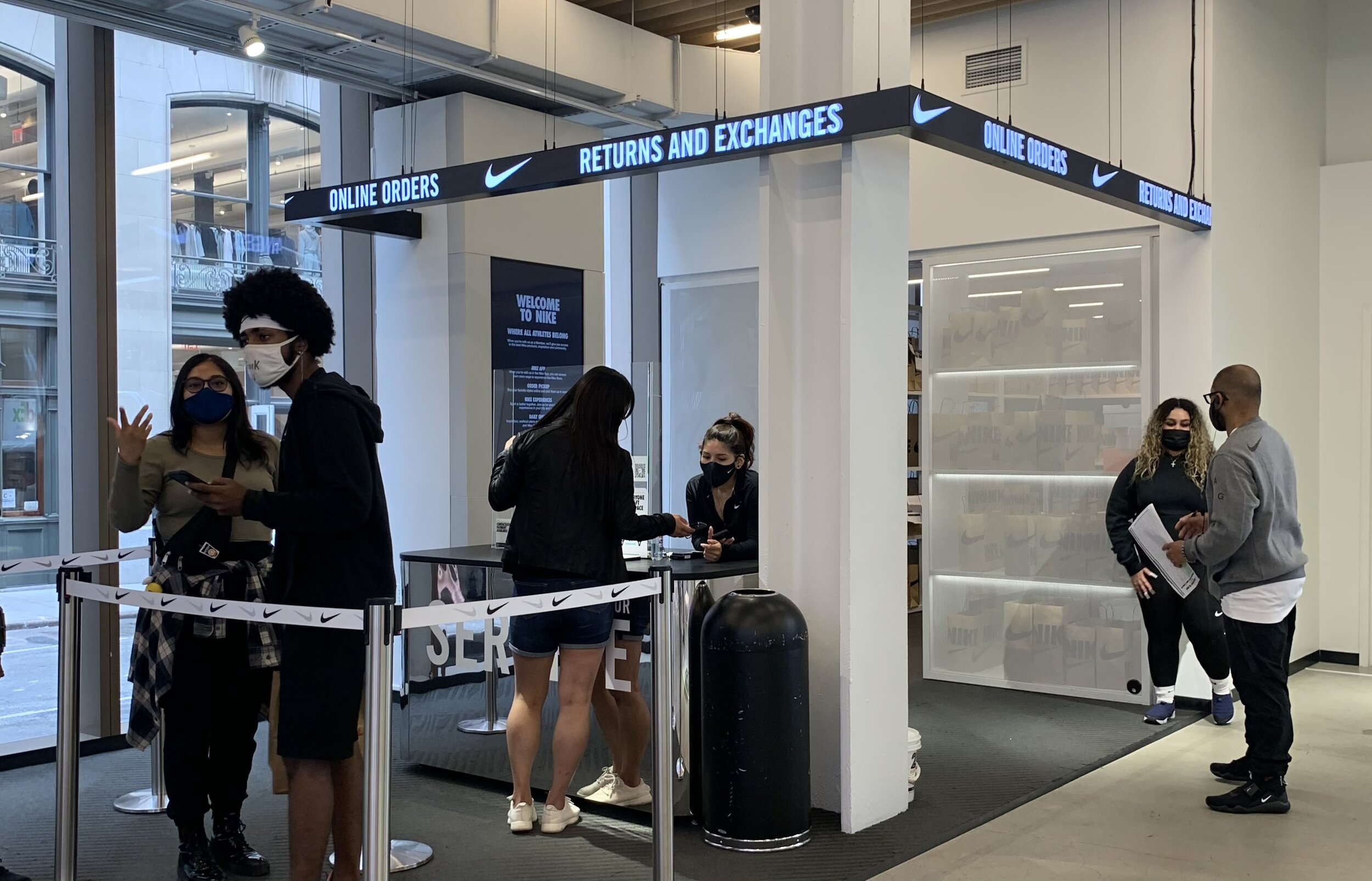The Pressure’s ON
At BEL, we like to experience the current state of retail for ourselves so that we better understand the landscape and see the obstacles brands are facing. Our reoccurring retail walkabouts involve an afternoon of field research scoping out the latest and greatest retail displays, paying special attention to new, tech-driven retail solutions. This hands-on delve into the current retail climate allows BEL to better assess and provide top-end retail solutions for different brands’ needs. Check-in on Retail Roundup every other Monday for updates and insights from our walkabouts!
Our latest walkabout had one standout store that everyone was excited about- the On flagship in Noho, NYC. On, a running company founded in Switzerland, opened its first flagship in Noho in December 2020. The flagship boasts its use of design and tech in creating an immersive, personalized journey for its customers that is reflective of the company’s philosophy. Unfortunately, it was a journey we never got to experience.
Upon entering the On store, we were immediately greeted by the “magic wall,” a tricked out, color-changing wall that analyzes a customer’s running style in seconds. The wall also serves as a physical partition, hiding the bulk of On’s store behind it.
We joined a short queue in anticipation of being let into the store relatively shortly. After waiting for a few minutes, the customers in front of us asked when they could be let into the store, their expression and tone suggesting they had already been waiting for awhile to “just look at one shoe.” The security guard calmly explained that the store wanted to create a highly personalized journey, meaning customers could only explore the store in a 1-on-1 (or 1-on-your group) setting accompanied by a sales associate. As window-shoppers who simply wanted to peruse On’s product line and explore the tech they implemented, the pressure of having a sales associate attached to our hip felt too intense. We ended up exiting the store shortly after hearing this comment and didn’t end up returning.
Some initial thoughts as we exited the store:
How does On handle high customer volume? Our walkabout took place on a Friday afternoon with relatively light foot-traffic and it was clear the customers in front of us had waited a significant period already by the time we got there. How do they manage when it’s busy?
As a purchasing customer, 1-on-1 attention can be very helpful compared to desperately trying to find help on the store floor. However, the average window-shopper is faced with feelings of intentionally wasting sales associate time and feeling pressured to buy.
How many customers does On lose from not allowing the ability to freely browse product?
In conjunction with visiting On, we planned visits to direct competitors like the Adidas and Nike stores in Soho. One key aspect of retail walkabouts is exploring direct competitors to see what brands are doing to help themselves stand out.
At Adidas, the sales associates were friendly and helpful without being overbearing. Upon entering the store, the sales associates let us know they were there if we needed help, but left us alone to do our shopping. We appreciated the space to browse while knowing we could find immediate help if we needed it. However, while we enjoyed a less-high pressure shopping environment, Adidas didn’t have any special technology to make their displays and store stand out. The only piece of “cool” technology, was a treadmill to test running shoes on. Especially given that their Soho location serves as their Originals NYC flagship, we had hoped for more innovative display on Adidas’ part.
Nike added various innovative features throughout their Soho location, both physical and technological, that simplified shopping for their customers. First, they very clearly outline their floorplan, improving traffic flow throughout the store and decreasing shopper confusion in regard to navigation. Second, Nike implemented self-checkout kiosks near the escalators in the store, allowing customers to bag and pay their transactions, all through the Nike app. This frees up sales associates as well as cuts down register lines. Lastly, Nike allotted 1000+ sq ft. to 3 trial zones - running, basketball, and soccer - that allows all Nike members to trial Nike athletic shoes while receiving direct, individual feedback from in-store certified athletes and integrated VR systems that provide real-time feedback for participants’ for free! These participatory stations save the results of the experience, documenting statistics for future visits.
Takeaways:
Elusiveness can be intriguing… to a degree. On’s product is completely hidden behind the magic wall that spans the length of the store. Despite not having seen any of their product, not having seen the “real” On, stuck in our minds the entire day. After venturing through competitor stores, we found ourselves continually circling back to “I wonder what On does for…?”
What’s the trade-off between creating an immersive customer experience and losing foot-traffic impulse buys? Our group was SO excited about On because of prior research. We knew about all their different tech features – the wall that analyzes running profiles, hidden shoe displays, the floor that measures the customer’s foot automatically, etc. The information we knew about On kept us reminiscing on the store, but as a general window-shopper, a 1-on-1 immersion model loses its appeal, especially when the products aren’t even initially perusable.
I’m not writing home about “sales associate not hovering during shopping” but I’m definitely telling all my friends to sign up for Nike so they can try the trial zones. While many retailers continue to stick with traditional displays and practices we commonly think of when we refer to “shopping”, innovative integrated technology, such as Nike’s trial zones and app usage, creates a more meaningful and memorable customer experience.



